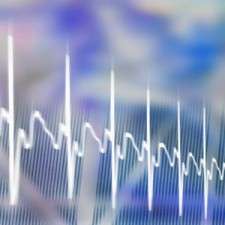Team discovers an unknown channel in the heart could illuminate unsolved cases of arrhythmia

The heart's regular rhythm is crucial to the delivery of oxygenated blood and nutrients to all the organs of the body. It is regulated by a bundle of cells called "the pacemaker," which use electrical signals to set the pace of the heart. Dysfunction in this mechanism can lead to an irregular heartbeat, known as arrhythmia, and often necessitates the implantation of an artificial pacemaker.
Previously, scientists found that many cases of inherited arrhythmias originating in the pacemaker could be attributed to functional defects in the channels responsible for the flow of sodium and calcium. Now Prof. Bernard Attali of Tel Aviv University's Sackler Faculty of Medicine and his fellow researchers have discovered a previously unidentified potassium channel in the cardiac pacemaker which helps to regulate the heartbeat. He hypothesizes that some cases of unexplained arrhythmia could be traced back to irregularities in this channel.
Developing therapies to target this potassium channel could be a significant step towards circumventing artificial pacemakers in favor of biological options, says Prof. Attali. This research has been reported in the journal PNAS.
A cellular heart model
To further investigate the workings of the biological pacemaker, Prof. Attali and his fellow researchers turned to embryonic stem cells isolated from human subjects. Once coaxed into differentiating into cardiac tissue, these cells began to beat automatically, like a small human heart.
While observing and recording the cells' electrical activity, researchers discovered the existence of a new channel in the pacemaker. Facilitating the flow of potassium from the pacemaker cells, this channel triggers the repolarization of the cells—returning the cell membrane from a "beating" to a "resting" state—and automatically renews or "restarts" the cycling of the heart.
Since discovering this channel in the embryonic heart, the researchers have shown that the channel exists in the adult heart as well. This finding deepens medicine's understanding of the heart's pacemaker function, which has been the subject of scientific research for over a century.
Screening for mutations
The next step is to conduct screening for mutations in the gene encoding the potassium channel, a process already underway at the TAU-affiliated Sheba Medical Center. "We would like to understand if there are genetic diseases linked to this channel," such as a previously unknown cause of arrhythmia, explains Prof. Attali. If a mutation is found, researchers can begin the hunt for drug compounds, which target this channel. The ultimate goal, he adds, is to be able to treat heart arrhythmias biologically by altering the properties of the pacemaker bundle, rather than relying on a man-made electric pacemaker.
One possible solution could be transplanting healthy pacemaker cells—developed from a patient's own stem cells—to replace dysfunctional cells and restore proper heart rhythm. This method would circumvent a common risk of the body rejecting a mechanical transplant.
















